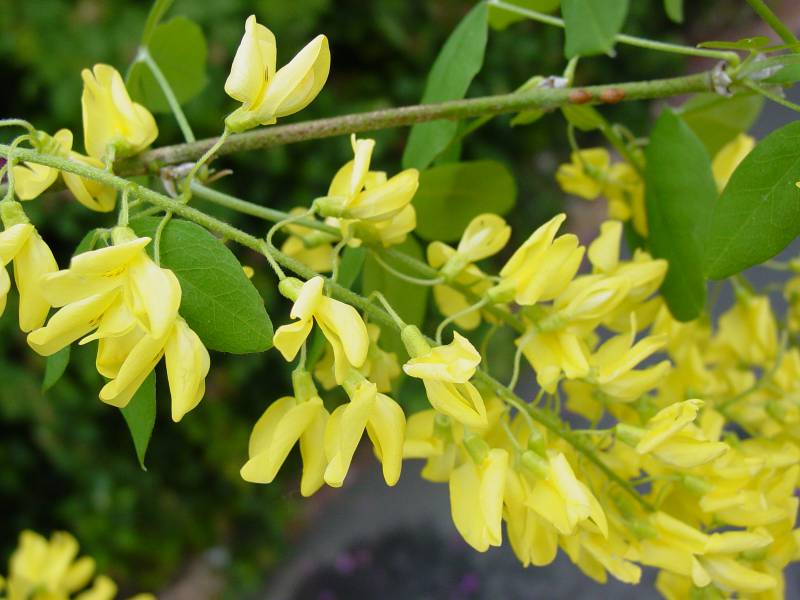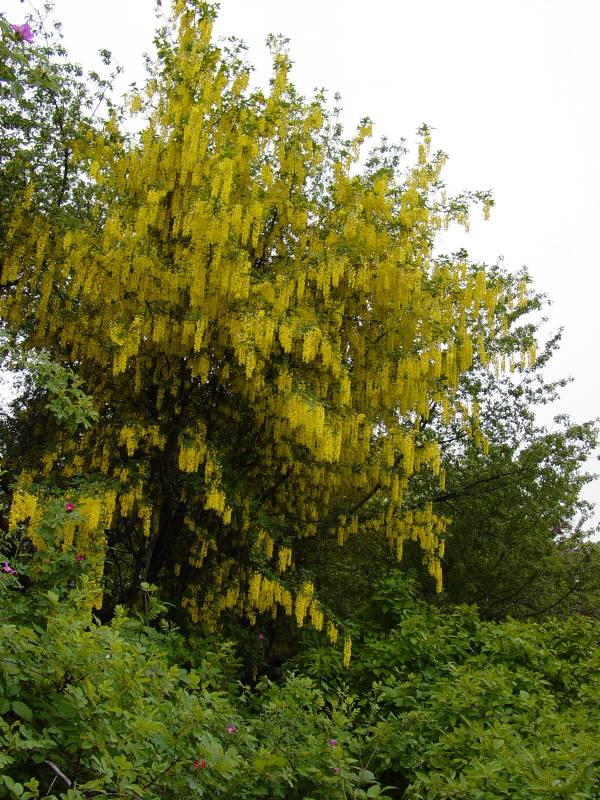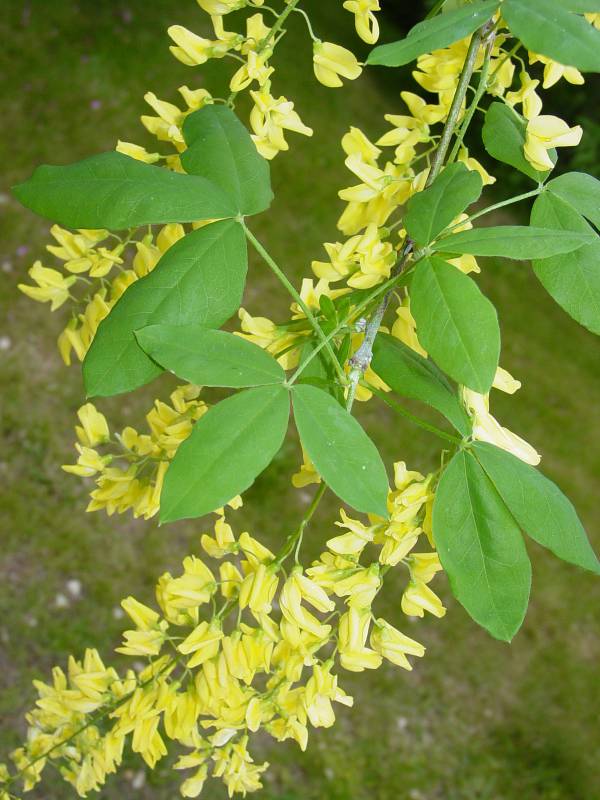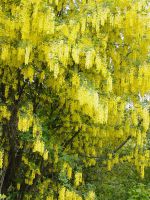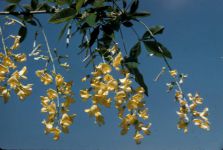Distribution: Occurring chiefly west of the Cascades crest at low elevations in Washington; British Columbia to California, east to Utah.
Habitat: Forest edge, wastelots, and other disturbed sites often in proximity to residential development where escaped from cultivation.
Flowers: May-June
Origin: Introduced from Europe
Growth Duration: Perennial
Conservation Status: Not of concern
Tree to 8 m. tall with arching, ascending branches; bark smooth, with columns of buff-brown lenticels.
Leaves trifoliate, long-petiolate, the leaflets entire, oval or elliptic with a wedge-shaped base, 6-8 cm. long, with silky hairs on the lower surface.
Inflorescence of many-flowered, pendant racemes, terminal on the twigs and branches; flowers pea-like, bright yellow, 2 cm. long, with 5 petals, the two upper petals with brown penciling; calyx bell-shaped, two-lipped; stamens 10, the filaments united in a tube.
Pod 4-6 cm. long, flat and lumpy, sparsely hairy.
Publication: Vorles. Churpfälz. Phys.-Öcon. Ges. 2: 363. 1787.
PNW Herbaria: Specimen records of Laburnum anagyroidis in the Consortium of Pacific Northwest Herbaria database
WA Flora Checklist: Laburnum anagyroidis checklist entry
OregonFlora: Laburnum anagyroidis information
E-Flora BC: Laburnum anagyroidis atlas page
CalPhotos: Laburnum anagyroidis photos

